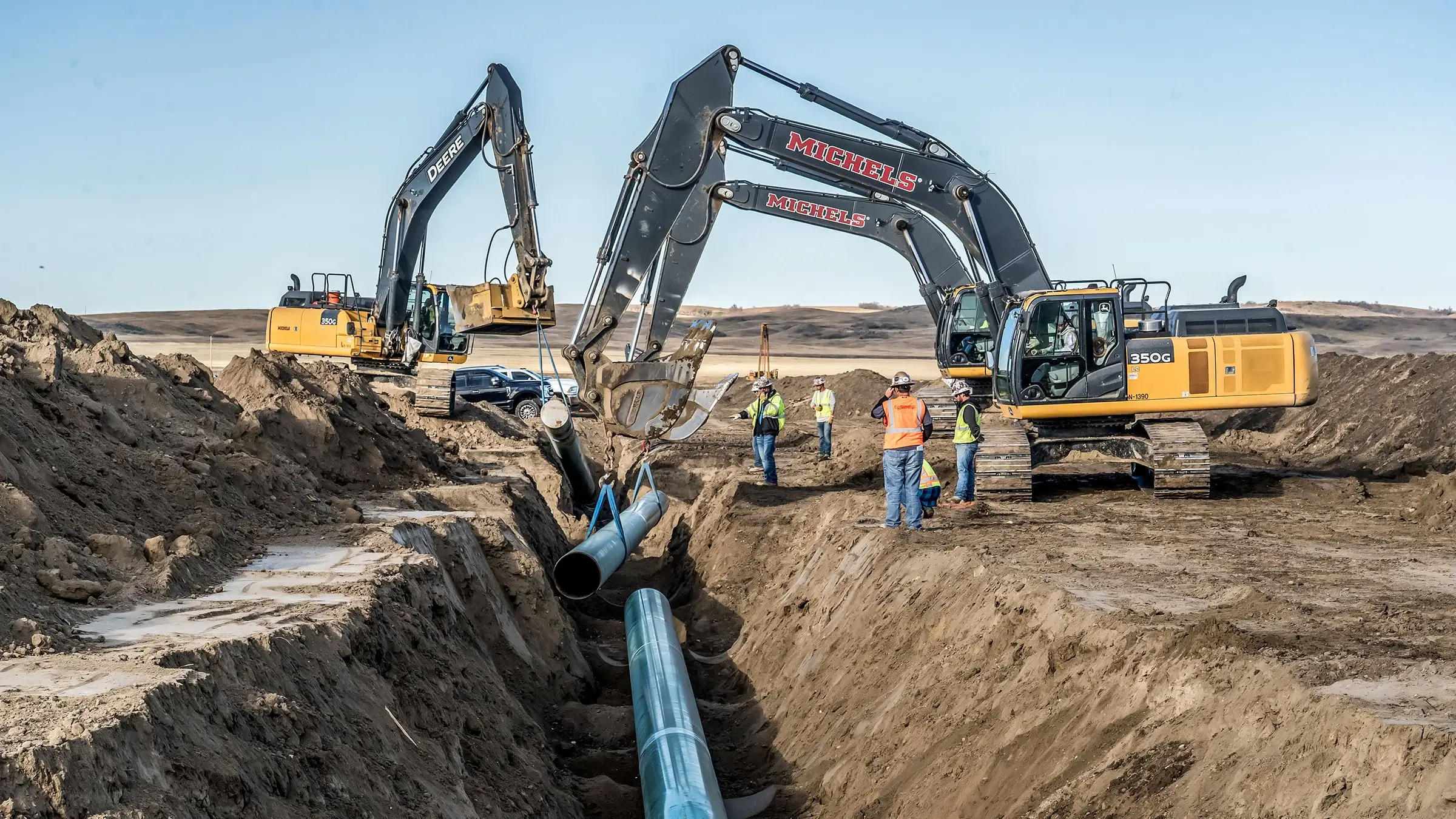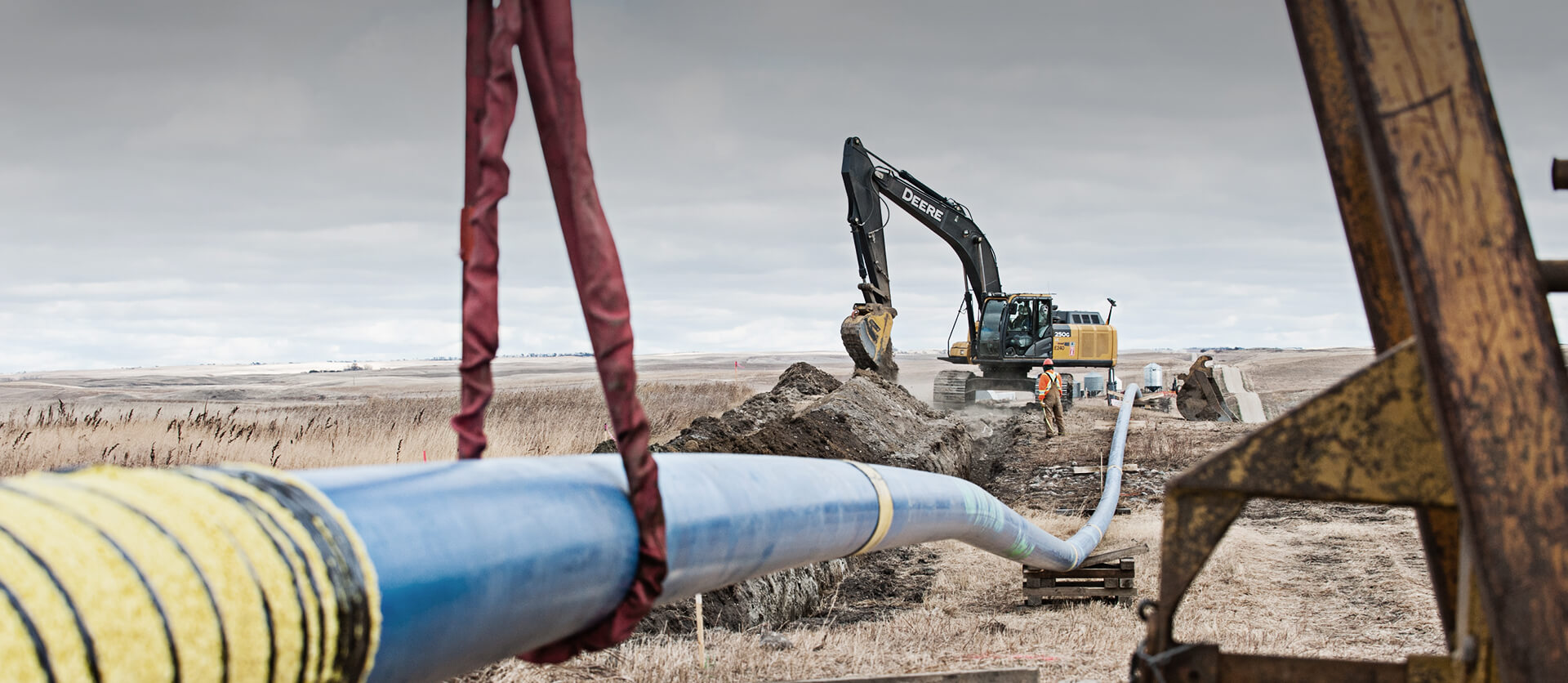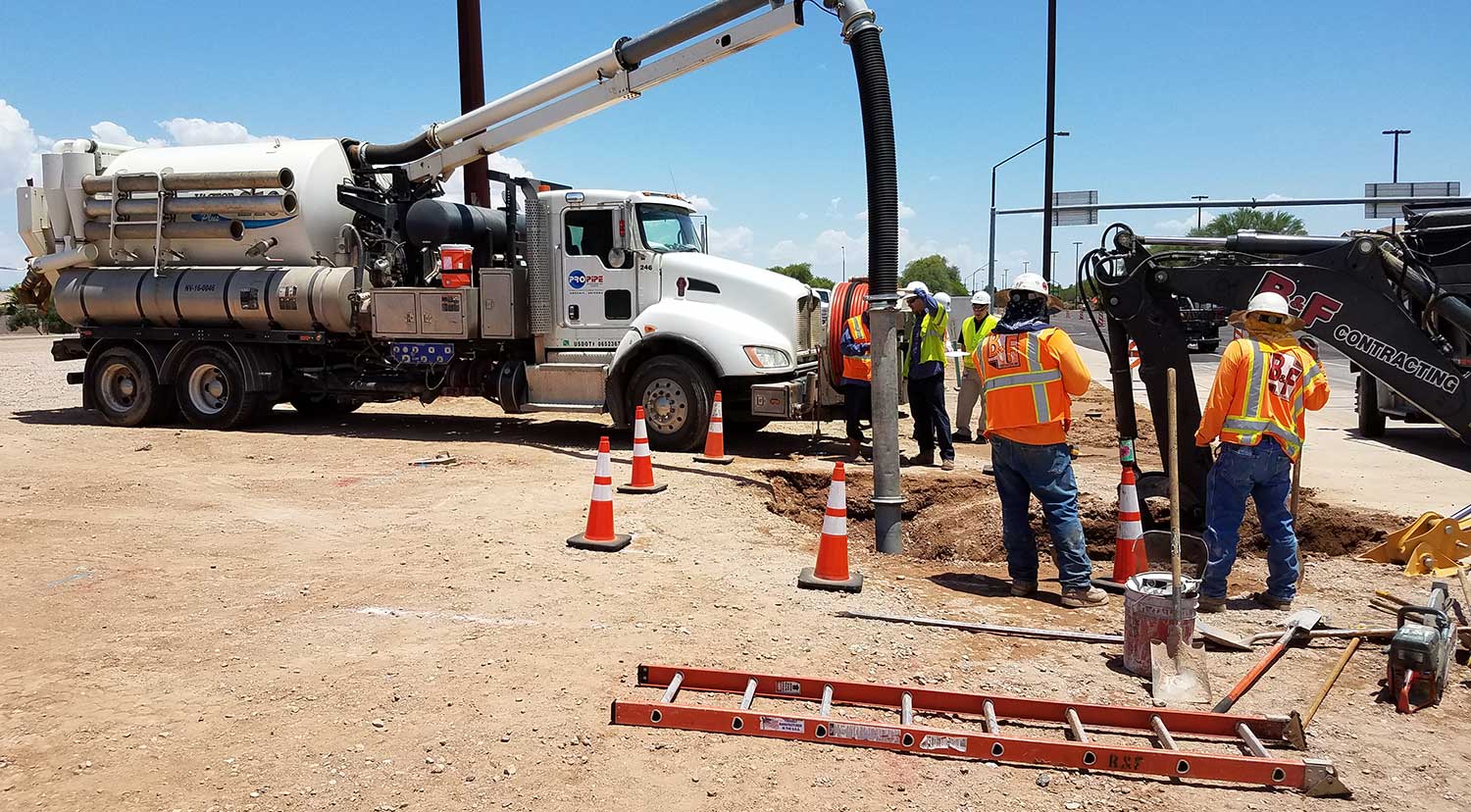Discovering the current Developments in Pipeline Construction Providers for Modern Projects
The Pipeline Construction sector is going through considerable changes. Developments such as smart products and robotics are improving standard practices. These advancements assure to boost effectiveness and safety and security. Furthermore, AI innovations are boosting task monitoring capabilities. As these aspects merge, they question concerning their long-term influence on sustainability and expense. Comprehending these innovations is important for stakeholders wanting to navigate this evolving landscape. What effects do they hold for future tasks?
The Increase of Smart Materials in Pipeline Construction
As the need for a lot more sustainable and efficient Pipeline systems enhances, the integration of smart products has become a transformative remedy in Pipeline Construction. These sophisticated materials have unique residential properties that enhance the efficiency and longevity of pipes. Self-healing polymers can automatically fix minor leaks, substantially minimizing upkeep prices and downtime. Additionally, products installed with sensors can keep an eye on architectural integrity and environmental problems, permitting for real-time data collection and evaluation.
Additionally, clever materials are often lightweight and corrosion-resistant, which not just simplifies installment but also prolongs the life-span of the systems. Their flexibility enables pipes to stand up to extreme environmental problems, promoting security and integrity. As sectors significantly focus on sustainability, making use of environmentally friendly wise materials adds to decreased environmental impact. Overall, the rise of smart products notes a remarkable change in Pipeline Construction, leading the method for ingenious options to satisfy contemporary framework needs.
Advancements in Robotics for Setup and Maintenance
The assimilation of wise materials in Pipeline Construction is complemented by advancements in robotics, which are revolutionizing installment and upkeep processes. Robotic modern technologies, such as automated welding systems and drones, improve effectiveness and precision, reducing human mistake and decreasing safety and security dangers. These robotics can operate in challenging environments, ensuring that installations are conducted in unsafe or remote areas without putting employees at danger.
Furthermore, robotic inspection devices geared up with innovative sensing units offer real-time information on Pipeline honesty, permitting for positive maintenance. They can find leaks or structural weak points, enabling timely treatments that extend the life expectancy of Pipeline systems. The use of robotics not just accelerates the Construction timeline yet likewise optimizes source appropriation, causing set you back savings. As these modern technologies continue to progress, they are readied to play an essential role fit the future of Pipeline Construction, ensuring dependability and sustainability in framework development.
AI-Driven Job Monitoring Devices Transforming Process
AI-driven task management tools are improving operations in Pipeline Construction by enhancing decision-making procedures via improved accessibility to real-time data analytics. These tools make it possible for teams to react quickly to project growths, thus enhancing efficiency. Furthermore, streamlined communication networks foster cooperation among stakeholders, even more optimizing job end results.
Boosted Decision-Making Processes

Real-Time Data Analytics
Taking advantage of real-time information analytics, modern-day task management devices reinvent operations in Pipeline Construction. These innovative devices take advantage of expert system to supply instant understandings into project efficiency, source allocation, and possible risks. By constantly monitoring vital performance indicators, teams can swiftly adjust to altering conditions, maximizing labor and products use. The integration of real-time information permits even more enlightened decision-making, decreasing delays and lessening prices. On top of that, anticipating analytics can recognize patterns and projection challenges prior to they rise, improving total task efficiency. Because of this, Pipeline Construction companies that take on these AI-driven devices can enhance job timelines and end results, ensuring they continue to be affordable in a progressively complex market landscape. This technology marks a substantial change towards data-centric management practices.
Streamlined Interaction Channels
Reliable communication is critical in Pipeline Construction, where many stakeholders must collaborate seamlessly to assure task success. The introduction of AI-driven job monitoring tools has reinvented interaction channels within the market. These devices help with real-time info sharing, permitting groups to accessibility updates, share papers, and track development successfully. By automating regular jobs and giving a centralized system for interaction, these advancements remove misunderstandings and reduce delays. Improved presence right into job timelines and source allotment promotes accountability amongst employee. In addition, AI analytics can determine potential interaction spaces, making sure positive analytic. Eventually, structured interaction networks not just improve process but additionally raise overall project efficiency, enabling Pipeline Construction companies to fulfill contemporary needs successfully.
Enhanced Safety Methods Through Technology Combination
The combination of innovation in Pipeline Construction has led to enhanced security protocols. Real-time tracking systems, wearable security gadgets, and automated risk evaluations are currently important parts in reducing risks on task websites. These advancements not just improve worker safety but additionally enhance conformity with industry regulations.
Real-Time Monitoring Equipments
Just how can real-time Related Site monitoring systems transform Pipeline informative post Construction safety and security procedures? By incorporating innovative technology, these systems supply continual monitoring of Construction tasks, guaranteeing immediate discovery of prospective dangers. Sensors and cams can check ecological conditions, devices performance, and labor force activities, delivering important information in actual time. This positive strategy allows task managers to determine dangers before they intensify, substantially improving precaution on-site. In addition, real-time surveillance helps with conformity with regulatory demands, making sure that safety standards are fulfilled continually. The capability to evaluate information immediately sustains enlightened decision-making, enabling timely interventions. Therefore, Pipeline Construction projects can run a lot more efficiently while protecting the wellness of employees and lessening accidents, thus transforming the market's safety landscape.
Wearable Safety Gadgets
Regularly, wearable safety and security tools are being incorporated right into Pipeline Construction to improve safety and security protocols. These innovative devices, consisting of smart headgears, vests, and wristbands, are developed to keep track of employee wellness and ecological problems in real-time. Outfitted with sensors, these devices can identify threats such as poisonous gas exposure, extreme heat, or high sound levels, giving prompt informs to managers and workers. In addition, wearable modern technology often consists of general practitioner monitoring attributes, permitting effective area tracking of workers on-site. This capacity not only help in quick response throughout emergencies yet also boosts general job administration. By prioritizing worker safety via technology combination, Pipeline Construction companies are making significant strides in decreasing crashes and advertising a culture of security within the industry.

Automated Threat Assessments
While standard threat analyses usually rely upon manual analyses, the combination of automated threat evaluation innovations is transforming safety and security methods in Pipeline Construction. These innovative systems utilize data analytics, expert system, and device discovering to identify possible threats more accurately and successfully. By continuously monitoring environmental problems, equipment status, and employee habits, automated evaluations offer real-time understandings that enhance decision-making. This positive method reduces the possibility of mishaps and enhances conformity with safety policies. In addition, automated risk analyses can be updated immediately, making sure that all stakeholders have accessibility to the most up to date details. Consequently, Pipeline Construction tasks take advantage of a much safer work atmosphere, lessening interruptions and cultivating a society of safety with innovation assimilation.
Lasting Practices in Pipeline Construction
As the need for energy facilities climbs, the Pipeline Construction industry progressively prioritizes lasting techniques that reduce ecological impact. Firms are adopting eco-friendly materials and innovative Construction techniques to reduce their carbon footprint. For example, the usage of trenchless innovation permits Pipeline setup with marginal interruption to the surrounding environment, decreasing and maintaining natural environments dirt erosion.
In addition, the implementation of renewable resource resources, such as solar or wind, to power Construction tasks is obtaining traction. This change not just reduces reliance on fossil gas however additionally improves the overall sustainability of Pipeline projects. Efficient waste monitoring techniques, consisting of reusing and reusing products, are ending up being criterion in the market.
Real-Time Tracking and Anticipating Upkeep Solutions
The shift towards sustainable techniques in Pipeline Construction has paved the means for the integration of real-time surveillance and predictive upkeep services. These innovations take advantage of progressed sensors and data analytics to continuously Go Here evaluate Pipeline integrity and operational efficiency. By accumulating data in actual time, drivers can detect abnormalities such as leakages or stress drops before they escalate into major issues. This aggressive strategy not just reduces ecological threats but also decreases downtime and upkeep costs.
Predictive maintenance utilizes algorithms to anticipate potential failings based on historical data and existing efficiency metrics. This makes it possible for prompt interventions, optimizing maintenance timetables and source allocation. Generally, real-time monitoring and predictive maintenance remedies stand for a substantial innovation in Pipeline Construction, improving safety and dependability while supporting sustainability goals. As sectors proceed to accept these developments, the operational landscape of Pipeline monitoring is established to develop drastically, making certain long-lasting viability and effectiveness.
The Function of Drones in Evaluating and Evaluation
Drones have actually arised as transformative tools in the checking and evaluation of pipelines, using enhanced effectiveness and accuracy. Their capacity to catch high-resolution images and videos from different angles enables comprehensive analyses of Pipeline integrity without running the risk of human safety and security. Furnished with sophisticated sensing units and thermal imaging abilities, drones can spot leaks, corrosion, and structural abnormalities that may not show up to the nude eye.
Additionally, the implementation of drones greatly minimizes examination time, enabling quicker decision-making for repair and maintenance. This efficiency equates to set you back savings and very little disturbance to bordering settings. Drones can likewise access hard-to-reach locations, such as tough surfaces or elevated frameworks, additionally expanding the range of evaluations.
As the Pipeline sector remains to accept technical advancements, the integration of drones right into surveying and examination processes is expected to grow, setting new standards for operational quality and safety in Pipeline Construction services.
Frequently Asked Concerns
What Are the Expenses Connected With Modern Pipeline Construction Innovations?
The prices related to modern-day Pipeline Construction developments often consist of advanced materials, specialized labor, and sophisticated innovation. These elements add to greater first financial investment, yet can cause long-term financial savings through enhanced efficiency and lowered upkeep demands.
How Do Regulatory Changes Impact Pipeline Construction Technologies?
Governing modifications substantially impact Pipeline Construction technologies by necessitating the fostering of safer, extra effective methods. Conformity demands commonly drive development, leading to advancements in materials, style, and Construction techniques that boost general job sustainability and security.
What Skills Are Required for Professions in Advanced Pipeline Construction?

Occupations in advanced Pipeline Construction need proficiency in engineering principles, task monitoring, security methods, and environmental regulations. Furthermore, abilities in innovation combination, team effort, and problem-solving are essential for traversing the complexities of modern facilities tasks.
Exactly How Can Business Make Sure Compliance With Environmental Criteria?
To assure compliance with ecological requirements, firms should implement strenuous training programs, carry out routine audits, and take on ideal techniques in sustainability. Engaging with stakeholders and keeping an eye on regulative changes better reinforces their commitment to ecological stewardship.

What Are the Key Difficulties Dealing With Pipeline Construction Today?
The crucial obstacles facing Pipeline Construction today include governing compliance, ecological problems, rising and fall material expenses, labor shortages, and the requirement for advanced innovation assimilation (Pipeline Construction Services). These variables complicate task timelines and overall performance in the market
As the need for a lot more lasting and reliable Pipeline systems boosts, the integration of clever products has arised as a transformative service in Pipeline Construction. AI-driven job administration tools are improving workflows in Pipeline Construction by boosting decision-making procedures via enhanced access to real-time information analytics. While task monitoring in Pipeline Construction has typically relied on hands-on processes, the combination of advanced devices greatly boosts decision-making abilities. Utilizing real-time data analytics, contemporary job management tools revolutionize process in Pipeline Construction. Occupations in innovative Pipeline Construction require expertise in engineering principles, project administration, safety methods, and environmental guidelines.